Traditional Japanese Matcha is a finely ground powdered green tea known for its vibrant green color and unique flavor. Made from shade-grown tea leaves that are carefully harvested, steamed, dried, and ground into a fine powder.
The traditional method of preparing Matcha involves whisking the powder with hot water until it becomes frothy. This process helps release the tea’s full flavors and aromas, resulting in a rich and smooth beverage. Traditional Japanese Matcha is also used in various culinary applications, such as desserts, smoothies, and savory dishes.
However, We will take you through every step of how to steep traditional Japanese matcha, from understanding the different types of matcha to mastering the whisking technique with a bamboo whisk. You’ll also discover the essential equipment for making matcha and learn how to create your perfect matcha space.
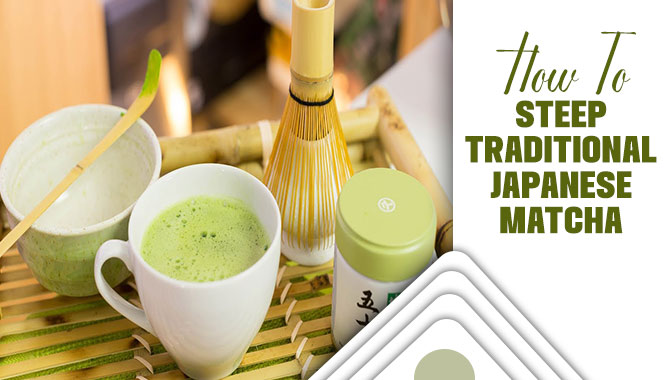
How To Steep Traditional Japanese Matcha- The Simple Way
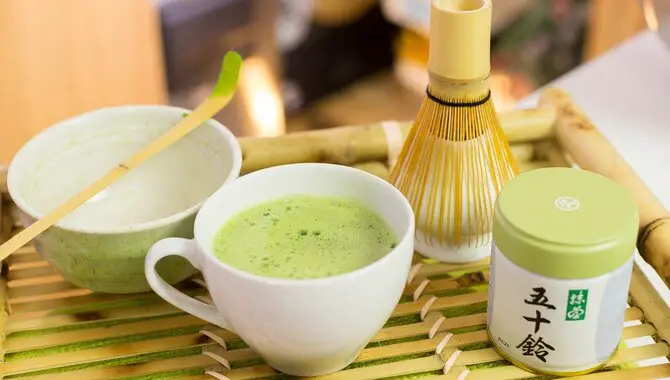
Indulge in the art of steeping traditional Japanese Matcha and unlock the secrets hidden within this exquisite green tea cup. Start your Matcha journey by selecting high-quality Matcha powder sourced directly from Japan. Steeping traditional Japanese matcha can be a simple and enjoyable process.
Here’s a simple way to how to steep traditional japanese matcha. Steeping matcha is about making a delicious beverage and embracing the mindfulness and tranquility associated with traditional Japanese tea ceremonies. So take your time, appreciate the process, and immerse yourself in the experience of enjoying this ancient and revered beverage.
Understanding The Different Types Of Matcha
When steeping traditional Japanese matcha, it is important to understand the different types available. Matcha is made from finely ground green tea leaves and comes in various grades, each with unique flavor and characteristics.
The highest grade of matcha, or ceremonial grade, is made from young, shade-grown leaves and carefully stone ground to produce a vibrant green powder. This type of matcha has a smooth, delicate flavor and is often used in traditional tea ceremonies.
Conversely, culinary-grade matcha is more affordable and has a stronger, slightly bitter taste. It is commonly used in cooking and baking. Understanding the different types of matcha can help you choose the best one for your needs and ensure a delicious cup of Japanese green tea every time you steep it.
Equipment Needed For Making Matcha
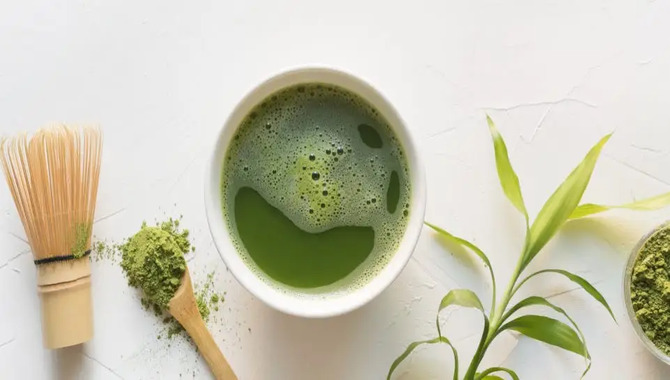
You will need a few essential tools to make the perfect cup of traditional Japanese matcha. First and foremost, you will need a bamboo whisk, also known as a chasen, to mix the matcha powder effortlessly. A matcha bowl, or chawan, will be your vessel for serving and savoring the matcha.
To ensure accurate measurements, a bamboo scoop, or chashaku, will assist you in portioning out the ideal amount of matcha powder. Lastly, hot water at the appropriate temperature will be the key to perfecting the matcha. Remember, each tool plays a vital role in achieving the authentic taste and experience of traditional Japanese matcha.
Preparing Your Matcha Space
Creating a peaceful and Zen-like environment for your matcha preparation is essential to embrace the centuries-old tradition fully. Eliminate any unnecessary distractions and create a clutter-free space to immerse yourself in the art of steeping matcha.
Embrace the authenticity of a traditional Japanese tea set featuring the elegant matcha bowl (Dhawan), delicate bamboo whisk (chasen), precise bamboo scoop (chashaku), and gentle sifter (fruit). Prioritize cleanliness by ensuring that all tools are impeccably clean and completely dry.
Arrange the required ingredients, such as the finest matcha powder and steaming hot water, and set at the appropriate temperature. Before you embark on this ceremonial journey, take a moment to find your inner stillness and cultivate mindfulness.
Measuring And Sifting Your Matcha
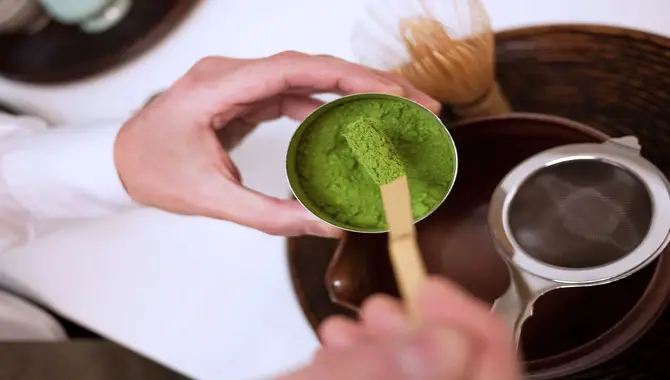
When steeping traditional Japanese matcha, measuring and sifting your matcha powder are crucial for achieving a smooth and flavorful cup of tea. Start using a bamboo scoop or teaspoon to measure the desired matcha powder in a bowl. Using about 1-2 teaspoons for every 8 ounces of water is recommended.
Next, use a fine mesh sieve or sifter to sift the matcha powder into the bowl. This helps remove any clumps and ensures a smooth consistency. Once the matcha is measured and sifted, add hot water and whisk until frothy. Taking the time to measure and sift your matcha properly will result in a more enjoyable tea-drinking experience.
Heating The Water To The Right Temperature
To achieve the perfect cup of matcha, it’s crucial to heat the water to the right temperature. Traditional Japanese matcha, a fine powder made from green tea leaves, is typically steeped with water heated to around 175°F (80°C).
This temperature ensures the best flavor and texture, allowing the matcha’s unique characteristics to shine. Boiling water should be cooled for a few minutes before use, as too hot water can taste bitter and unpleasant. Investing in a thermometer or an electric kettle with temperature control can help you achieve the ideal water temperature for steeping matcha.
Pouring The Water Over The Matcha
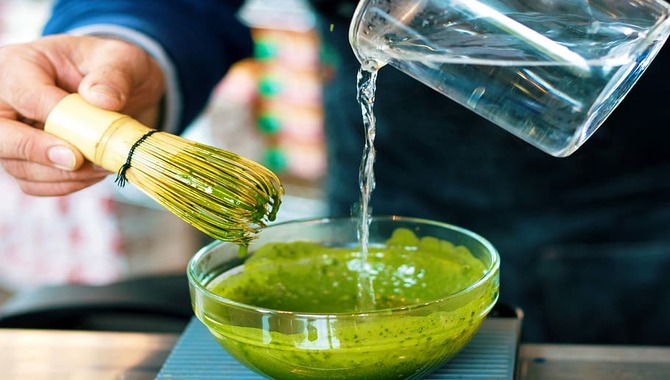
To achieve the perfect cup of matcha, pouring water over the matcha requires a few important steps. Start by preheating the matcha bowl to the ideal temperature. Then, measure the desired amount of matcha powder and sift it to remove clumps.
Gently pour hot water over the matcha powder, using a whisk or bamboo chasen to whisk in a zigzag motion until frothy. Avoid over-whisking for a bitter taste, and strive for a smooth and creamy consistency. Finally, indulge in the rich flavors and aromas of traditional Japanese matcha.
Whisking Your Matcha With A Bamboo Whisk
To achieve the perfect cup of Japanese green tea, whisking it with a bamboo whisk is essential. Begin by sifting your matcha powder into a bowl to remove any clumps. Then, add hot water to the bowl, using about 2 oz (56.7 g) of water for every tsp (2 g) of matcha powder.
Take your bamboo whisk and vigorously whisk the matcha and water in a zigzag motion until it becomes frothy and well combined. This whisking process helps create a smooth and creamy texture while incorporating air into the matcha for a lighter flavor. Serve your freshly whisked Japanese tea immediately and enjoy its vibrant aroma and health benefits.
Adjusting The Flavor And Consistency Of Your Matcha
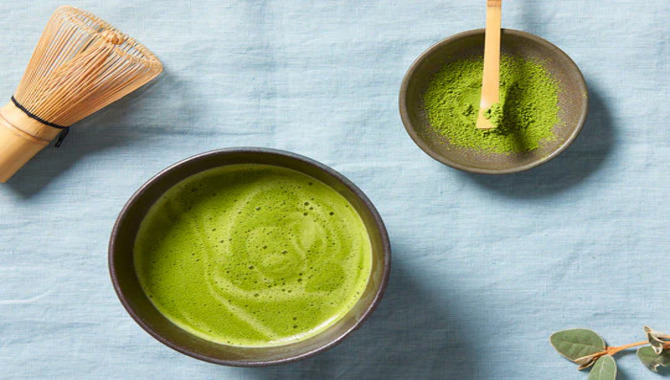
To customize the taste and texture of your matcha, experiment with different ratios of matcha to water and various techniques. For a stronger, more concentrated flavor, use less water.
If you prefer a smoother, creamier consistency, whisk the matcha vigorously. Enhance the sweetness and balance out bitterness by adding a small pinch of salt. Discover your perfect cup of tea by adjusting the flavor and consistency according to your taste.
Tips For Making Perfect Matcha Every Time
When brewing a perfect cup of Japanese matcha, there are a few key tips to remember. Start using high-quality matcha powder sourced from Japan, ensuring a vibrant and authentic flavor. Before you begin, sift the matcha powder to remove clumps, guaranteeing a smooth and even texture. It’s crucial to use hot water, but not boiling, to preserve the delicate flavors of the tea leaves.
Aim for a water temperature of around 175°F or 80°C, bringing out the best in your matcha. To create the perfect froth, whisk the matcha vigorously in a zigzag motion using a traditional bamboo whisk, a chase.
This process helps to create a light and airy foam, enhancing the overall experience. With these simple tips, you can enjoy the perfect cup of matcha, whether seeking a relaxing moment or capturing the beauty of Japanese tea ceremonies.
Recipes For Matcha Drinks And Treats
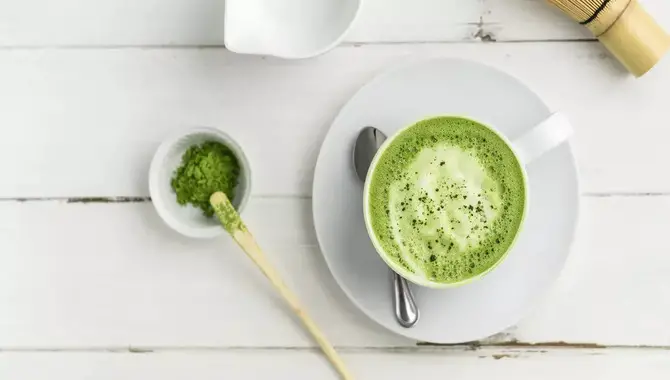
Create delicious matcha drinks and treats by sifting the fine powder of traditional Japanese matcha tea. Combine it with hot water and whisk until frothy, using a bamboo whisk. Explore the versatility of matcha by incorporating it into recipes such as matcha lattes, smoothies, cookies, and ice cream.
Experiment with ratios of matcha to water to find the perfect balance of flavors and textures. Use high-quality matcha powder, ensuring no clumps, for the best taste and appearance. Appreciate the vibrant colors, unique aroma, and health benefits provided by matcha in your homemade beverages and desserts.
Conclusion
Steeping traditional Japanese matcha is a delicate process that requires attention to detail and precision. From selecting high-quality matcha powder to using the proper tools and techniques, every step plays a crucial role in achieving the perfect cup of matcha.
The ceremonial aspect of preparing and enjoying matcha adds to its allure and makes it a unique experience. By understanding the different types of matcha, preparing your matcha space, and following the steps on how to steep traditional japanese matcha for measuring, sifting, heating, pouring, whisking, and adjusting, you can create a cup of matcha that is rich in flavor and has a smooth consistency.
Don’t forget to explore different recipes for matcha drinks and treats to add variety to your matcha experience.
Frequently Asked Questions

I’m a writer and blogger who loves to talk about entertainment, culture, and relationships. I love to share my thoughts and insights on these topics, and I’m always looking for new ways to engage with my readers. I’m also a big fan of learning new things, so I’m always exploring new areas of interest.
